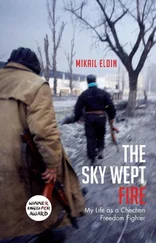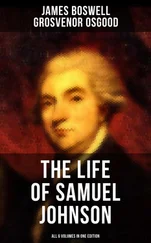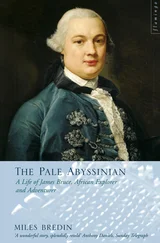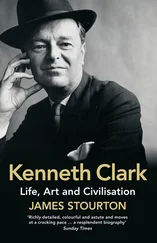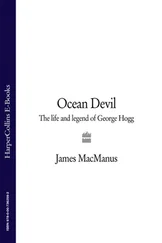But Graves came under fire for turning the city into a police state; there were charges of brutality and even torture. In 1964 the state ordered Passaic County to convene a grand jury to investigate reports that Paterson police had burned a prisoner’s body with matches and poured alcohol into his nose. The grand jury made no indictments but recommended that the department photograph prisoners both before and after questioning. The barroom raids were seen as grandstanding ploys, sacrificing basic patrol work. Although drug-related crimes were the city’s worst problem, there was only one man in the Narcotics Bureau.
Paterson’s swelling black population especially feared the mostly white police force and resented Graves’s apparent indifference to their grievances. During the Depression, blacks made up less than 2 percent of the city’s population. By the middle 1960s, they were about 20 percent. Between 1950 and 1964, 18,000 blacks and Hispanics moved into Paterson as 13,000 whites moved out. At the same time, good factory jobs were disappearing quickly, creating tensions between whites and blacks for a piece of the shrinking economic pie. Many black immigrants settled in the Fourth Ward and established taverns and nightclubs. Housing there was a shambles. Old wooden structures slouched beneath the weight of their new occupants; many of the units lacked plumbing, central heating, or private baths. A citywide survey showed that when a black family moved into a tenement, the rent was increased. There were long waiting lists for low-income municipal housing, and when blacks tried to move out of the Fourth Ward, they were refused or stalled by white real estate agents. Health conditions were horrid. A protest group offered a bounty of ten cents for each rat found in a home and delivered to City Hall. A court injunction snuffed out the rodent rebellion.
The anger in the black community was finally unleashed in August 1964, when a three-day riot broke out, primarily in the Fourth Ward. No one was killed, but the cataract of violence unnerved white Patersonians, who still made up 75 percent of the city’s 140,000 residents. Black youths shattered more than a dozen store windows at the intersection of Godwin and Graham Streets while a black youngster battling sixteen policemen was pushed through a plate glass window. Factory fires, Molotov cocktails, and errant shotgun blasts sent panic through the city. A marked law enforcement car from Maryland appeared with two German shepherd police dogs, although the authorities said they were never loosed on the rioters. Black leaders blamed the uprising on police harassment and overcrowded housing conditions, saying it was simply too hot to stay indoors, and they demanded rent control in blighted areas and a new police review board.
The riot was part of a summer of uprisings that broke out in Harlem, in Jersey City and Elizabeth, New Jersey, in Rochester, New York, and in small black enclaves in Oregon and New Hampshire. In each case, a street arrest triggered escalating hostilities, but only Paterson had Frank Graves.
The mayor tried to keep control. At a luncheon in Paterson on August 12 for Miss New Jersey, he promised, “Paterson will be completely safe for you tonight.” By nightfall, Graves probably hoped, Miss New Jersey was smiling in some other part of the state, because violence erupted once again in Paterson. Graves personally led the police through a ravaged ten-block area and narrowly missed serious injury when a bottle was thrown at him as he stepped from his car. Confronted by the overturned vehicles, shattered storefronts, and broken streetlights, Graves blamed the riot on “the worst hooligans that man has ever conceived.” His rhetoric, combined with his hard-nosed police, left little doubt among blacks that Graves was less interested in civil rights than civil repression.
Thoughts of race and crime were probably not on the mind of seventeen-year-old William Metzler when he arrived at work on Thursday, June 16, 1966. Metzler was an attendant for his father’s ambulance company in Paterson, working a midnight–8 A.M. shift. Employees stayed awake for two-hour stretches, sipping coffee, eating doughnuts, and monitoring the police radio. Some time after 2 A.M. on June 17, Metzler began hearing a series of police calls amid escalating panic. One call said, “Holdup.” Another: “Shooting.” And yet another, “Code one for ambulances,” which meant emergency.
Metzler and his older brother, Walt, raced their ambulance twelve blocks to the scene of the crime: the Lafayette Grill at 128 East Eighteenth Street, a nondescript neighborhood bar on the first floor of a tired three-story apartment building. When the ambulance arrived, a police car and two officers were on the site. William Metzler opened the bar’s side door, on Lafayette Street, walked inside, and literally slid across the bloody tile floor, almost falling into the red stream. Amid the cigarette and nut machines, a pool rack and jukebox and black-and-white television above the L-shaped bar, a scene of mayhem emerged: there were four bullet-ridden bodies—two dead, two alive, all white. It was, Metzler said years later, “a Wild West scene.”
While the shooting itself would be subject to one of the longest, most bitterly contested criminal proceedings in American history, no one would ever dispute the distinctively sadistic nature of the rampage. These basic facts were known within days.
Two black men entered the bar through the side door, one carrying a 12-gauge shotgun, the other a .32-caliber handgun. The bartender, James Oliver, age fifty-one, flung an empty beer bottle at the assailants, then turned to run. As the bottle shattered futilely against the wall, a single shotgun blast from seven feet away ripped through Oliver’s lower back, opening a two-by-one-inch hole. The bullet severed his spinal column, literally breaking the man in half. Oliver fell behind the bar, dead, two bottles of liquor lying near his tangled feet and cash strewn on the floor.
At about the same time the second assailant, holding the handgun, fired a single bullet at Fred Nauyoks, a sixty-year-old regular sitting on a barstool. The bullet ripped past Nauyoks’s right earlobe and struck the base of his brain, killing him instantly. He slumped over as if asleep, his head lying in a pool of blood, a lit cigarette between his fingers, his shot glass full, and cash on the bar ready to pay for the fresh drink. His foot remained on the stool’s footrest.
The pistol-carrying gunman then fired a bullet at William Marins, a forty-three-year-old machinist who had been at the bar for many hours, sitting two stools down from Nauyoks. The bullet entered his head near the left temple, caromed through the skull, and exited from the forehead by the left eye. He survived his wound and was able to describe the assailants to the police.
Seated in a different section of the bar was fifty-one-year-old Hazel Tanis, who had just arrived from her waitressing job at the Westmount Country Club. The assailant with the shotgun fired a single blast into her upper right arm. Then the second shooter turned and emptied his remaining five bullets, the muzzle of the gun as close as ten inches from the victim. Four bullets struck their mark: the right breast, the lower abdomen, the vagina, and the genital area. Tanis survived and was able to describe the gunmen to the police, but she developed an embolism four weeks later and died.
From the outset, the Lafayette bar murders became intertwined with another brutal homicide in Paterson. About six and a half hours earlier, a white man named Frank Conforti walked into the Waltz Inn, about four blocks from the Lafayette. Conforti had sold the bar to a black man, Roy Holloway, who was paying him in weekly installments. On this night, Conforti came to collect his last payment, but a heated argument broke out over the amount owed. Conforti stormed out of the tavern and returned moments later with a double-barreled shotgun. He blasted Holloway in the upper right arm; when Holloway tried to flee, he fired again, this time striking him in the head. Conforti was arrested for murder.
Читать дальше

